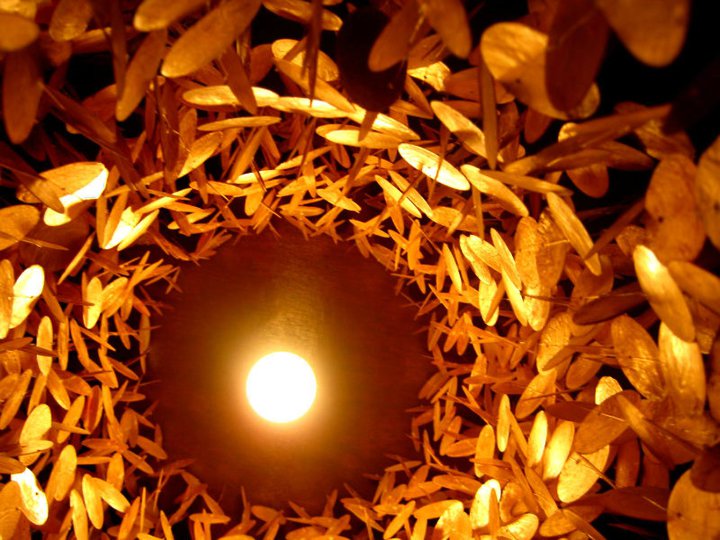As mentioned in the previous posts on seeing the Sinug (Sinulog) Traditional Ritual Dance, this post shall dig in deep as to the cultural roots of this Cebuano Tradition. This celebration of dance and prayer to the Santo Niño with the Traditional way of the SINUG or SINULOG has been celebrated by across generations by a close-knit family who are "KEEPERS OF THE SINULOG DANCE" and which has been danced for the Gorordo family for generations. The Gorordo Family is one of the prominent families in Cebu since the Spanish Era in the Philippines and who were the owners of the CASA GORORDO which has now been turned into a museum.
This religious dance ritual is done on the Monday after the feast of the Santo Niño, a day for souls in Catholic Tradition. The prayers are for the eternal repose of all the souls in purgatory, especially the deceased Gorordos.
Estelita "Nang Titang" Diola has been doing this ritual since she was a child. She inherited the skill of the Sinug beat from Macario "Iklot" Bontilao and the dance steps from her father, Buenaventura Diola. Many believe that Nang Titang and her group of dancers are the keepers of the original Sinug or Sinulog dance steps.
About Nang Titang - Keeper of the Sinug Ritual:
Between the 1940s and the 1950s, Estelita "Titang" Diola was already known as a sinug dancer. She and her group were asked by several families to dance as a form of offering to the Holy Child. Among them was the Gorordo family.
Nang Titang, as she is popularly called, began dancing the sinug at the age of seven. She learned to master the steps and the song prayers from her father and soon studied how to beat a sinug beat from Macario 'Iklot' Bontilao. She recalled that before the advent of the Sinulog Festival, four groups from barangays Lahug, Busay, Guadalupe and their group from Mabolo converge in the Basilica to perform the Sinug Ritual.
About Sinug-Sinulog:
Sinug is a dance ritual as prayer performed at the altar before the image of the Holy Child Jesus or the Santo Niño. It may have its origins in the Pre-catholic Cebu that imitates water current, sug. Today, it is popularly synonymous with the word "Sinulog", a dance mardi gras with steps patterned after the traditional dance form while holding and lifting the image of the Santo Niño in the parade.
Etymology:
In the Cebuano Language, the letter "L" is usually not enunciated and can be written off in words that contain the letter in-between. Example: Balay -- Bay (House); Dalan -- Dan (Road); Kalayo -- can be spoken into Kayo (Fire). However, although assumed to be the same at first, the sinulog has become the dance mardi gras performed during the annual festival, while the sinug retains the traditional dance ritual.
Sinug is popularly belived to be derived from "Sulug" or current, as the basic movements of the dance, which are the forward and backward steps portray the advancing and receding of the sea or river currents.
 |
| Spectators are also invited to learn and dance on the spot in order to fully immerse in experiencing the tradition |
One version claims that the word comes from "Sug-sug" or teasing. Humabon's jester, Baladhay became sick and Queen Juana placed the image of the Holy Child in front of a bench where he was laid. He woke up wielding a bolo at the image. He claims that he was teased by the Santo Niño by tickling him using a coconut midrib or "tukog" while he was asleep. In his fury, Baladhay grabbed a bolo trying to strike at the child, but the Santo Niño fondly dodged him in a forward and backward motion, and Baladhay countered every step. Without realizing it, Baladhay was dancing with the boy that looks like the movement of Sinulog.
According to Nang Titang, the original Sinug is composed of three principal characters - the Christians, Muslims and the "Batang Hari" or the Holy Child. The performers carry with them swords and shields. The ritual first showed the division between the two camps, the Muslims and the Christians, but eventually through the intercession of the Santo Niño, the two rivals became united.
The Dance, beat and song:
The sinug dance has 2 basic steps. the natural and the kinampilan. The natural step is the popularly known two steps forward, one step backward while the kinampilan has one step right foot forward and one step backward, while the left foot stays in place.
The song prayer "paso Alang sa Pagsaludo sa Señor" (Walk to Honor the Señor) starts the Sinug ritual and ends with the song "Panamilit" (Farewell). Here's a clip video I took when I observed and immersed myself in this ritual:
Sinug is one of the living traditions that has been continued by the Culture and Heritage unit of the Ramon Aboitiz Foundation, Inc. (RAFI), which is committed to the preservation of the house traditions of the Gorordo family. This annual ritual would continue to promote the Cebuano Culture, Heritage and history to the local and international community. Visit rafi.org.ph for more info.!
Information Sources: RAFI, Sinug Ritual Dance











